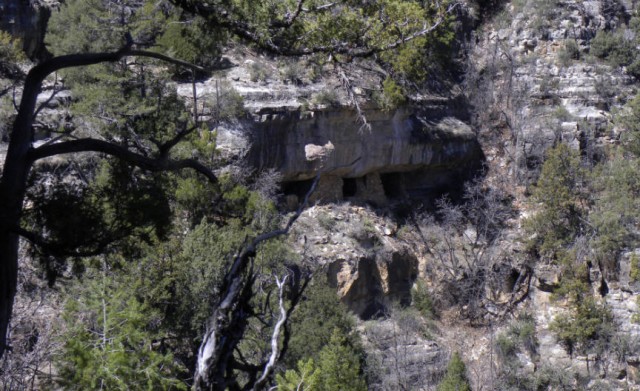-
Cliff Dwellings in the Canyon Wall, Walnut Canyon National Monument – Flagstaff, Arizona

©2011 John Wanserski for Creative Juice LLCWalnut Canyon National Monument
Map of Walnut Canyon National Monument
Weather forecast for Flagstaff, Arizona vicinity
Blog entries for Walnut Canyon National Monument
-
Big Kiva, Bandelier National Monument – New Mexico
-
Video of Natural Bridges National Monument, Utah
Natural Bridges, 6,500 feet above sea level on Cedar Mesa, is home to three spectacular sandstone landforms. The three massive bridges where formed from sandstone that was once the shore of an ancient sea. Sipapu (In Hopi methology, a gateway through which souls may pass to the spirit world), is the second largest natural bridge in the world. Kachina (named for the dancers that play a central role in Hopi religious tradition), is the youngest of the three. A rock fall in 1992 dropped over 4,000 tons of rock to the valley floor. Owachomo (rock mound in Hopi), is named after the rock formation on top of the southeast end of the bridge. The “Bear’s Ears” buttes are seen on the horizon. Horsecollar Ruin is a well preserved ancestral Puebloan site that is more that 700 years old. There is a campground available with 13 sites. An 8.6 mile loop trail will take you to all three bridges. Shorter trails lead to each bridge from the scenic drive.
-
Frijoles Canyon, Bandelier National Monument, New Mexico
-
Video of Bandelier National Monument, New Mexico
Adolph Bandelier, the first anthropological scholar of the southwest, explored Frijoles Canyon, New Mexico in 1880. The oldest site in Bandelier National Monument dates back to 2010 B.C. Around 1100 A.D. Pueblo Indians began inhabiting Frijoles Canyon and the Pajarito Plateau. Around 1300 A.D. about a dozen large villages existed in the area. One of them, Tyuonyi, is accessible within the Monument near the visitor’s center. The remnants of cliff cave dwellings dug into the volcanic tuft, along the canyon walls, suggest an extensive multi-story village. Some of these Pueblo structures with labyrinths of caves and rooms were occupied for over 400 years. Approximately 3,000 archaeological sites are being documented within the Monument. An unexcavated village, Tsankawi, lies 11 miles away in a separate section of the Monument. The pueblos and cliff cave dwellings were vacated in the 1500’s. Part of the Monument has wilderness designation. Visitors can overnight in the backcountry with a permit. Family and group campgrounds are also available.